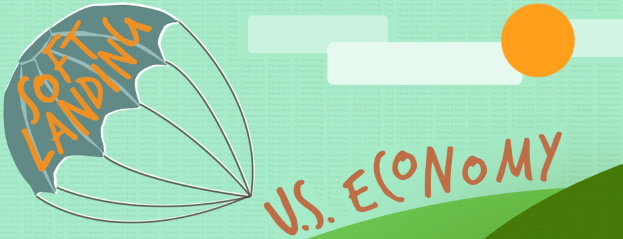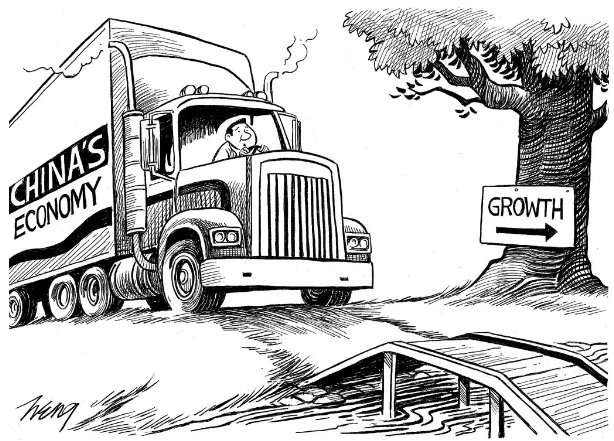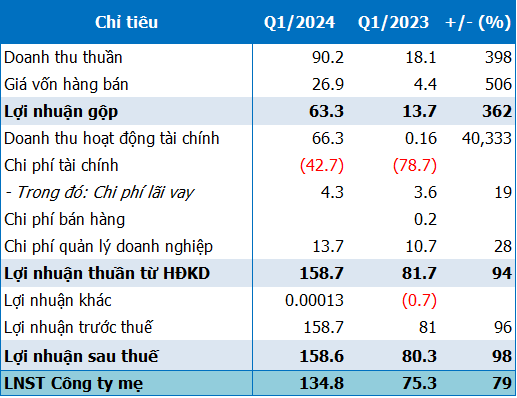Scenarios for 2024
Around this time, 1 year ago, about 85% of economists and market analysts, including myself, predicted that the US and global economy would experience a recession. Inflation would decrease but remain high, suggesting that monetary policy would tighten further; the stock market would decline and bond yields would remain high.
However, the opposite has mostly happened. Inflation decreased more than expected, avoiding an economic recession, the stock market increased, and bond yields decreased after rising. Therefore, analysts must begin forecasting for 2024 with caution. The basic task remains the same: starting with the baseline scenario, the favorable scenario, and the unfavorable scenario, then determining the probability of each scenario changing over time.
The baseline scenario of many economists and analysts, though not all, is a “soft landing”: developed economies – starting with the US – avoid a recession, but the growth rate remains below potential and inflation continues to decrease to the target of 2% by 2025. At that point, central banks may start cutting policy rates in the first quarter or second quarter of this year. This scenario would be the best scenario for the stock and bond markets, which have already started to recover with expectations.

Source: Business Review at Berkeley
The “no landing” scenario: growth – at least in the US – remains above potential, inflation decreases less than predicted by the market and the US Federal Reserve. Interest rate cuts will happen later and at a slower pace than what the Fed, other central banks, and the market are currently expecting.
The worst-case scenario is a “hard landing” with a minor recession that pushes inflation lower and faster than expected by central banks. Lower policy rates will come sooner; instead of the 3 expected 25-basis point cuts that the Fed has signaled, there could be 6 cuts.
Of course, a more severe recession could occur, leading to a credit and debt crisis. But this scenario seemed feasible last year – due to the spike in commodity prices following the Russia-Ukraine conflict and the bankruptcies of some US and European banks – while now, this scenario seems unlikely due to weak aggregate demand. It will only become a concern if there is a new inflation shock. For example, energy prices spike due to the Gaza conflict, especially if it escalates into a larger regional war, disrupting oil production and exports from Gulf countries.
Other geopolitical shocks, such as the recent tension between the US and China, may cause more stagnation (lower growth and higher inflation) than a recession (lower growth and lower inflation), unless trade is widely disrupted or production and export activities of chips from Taiwan are significantly reduced. Another major shock could occur in November 2024 with the US presidential election. But that would affect prospects for 2025 more, unless there is significant domestic turmoil leading up to the vote. However, again, political instability in the US would contribute to more stagnation than stagflation.
For the global economy, both the “no landing” scenario and the “hard landing” scenario currently have low probabilities, even though the “no landing” probability in the US is higher than in other developed economies.
The US and some other developed economies seem to be headed for a “soft landing”. Despite tighter monetary policies, the growth rate in 2023 is still higher than potential, and inflation continues to decrease as negative pandemic supply shocks abate. In contrast, the Euro area and the UK have had below-potential or near-zero growth in recent quarters due to decreased inflation and may not experience a strong rebound in 2024 if the factors hindering growth persist.
Key determining factors
Whether developed economies will land softly or hard will depend on several factors. First, the tightening of monetary policy, an operation with delays, may have a greater impact in 2024 than in 2023. Moreover, debt refinancing may cause many firms and households to bear significantly higher debt-servicing costs this year and next. And if some geopolitical shock causes a new inflation shock, central banks will have to postpone rate cuts. There will be no need for a major escalation in Middle East conflicts to boost energy prices and force central banks to revisit their current outlook. Many major medium-term threats of stagflation can push lower growth and higher inflation.
The second factor is China – a country undergoing a difficult “hard landing”. Without economic restructuring (which seems unlikely), the growth potential of China will be below 4% in the next 3 years, decreasing to nearly 3% by 2030. The Chinese government may consider 2024 growth below 4% unacceptable; but 5% growth simply cannot be achieved without macroeconomic stimulus, which would increase the already dangerous leverage ratio.
China is likely to implement a moderate stimulus, sufficient to achieve growth above 4% slightly in 2024. Meanwhile, structural impediments to growth – aging society, debt, and excess real estate – persist. In the end, China may avoid a severe financial crisis, but it will be a difficult “hard landing” with disappointing growth.

Source: The New York Times
The best scenario for stocks and bonds is a “soft landing”, although this is currently reflected in prices. The “no landing” scenario is good for the real economy but bad for stocks and bonds because it will hinder central banks from cutting interest rates. A “hard landing” is not good for stocks – at least until the minor recession bottoms out – and good for bond prices, as it suggests rate cuts come earlier and faster. Finally, a serious stagflationary scenario is clearly the worst outcome for both stock and bond yields.
Currently, the worst situations seem to occur the least. But any factor, especially geopolitical, can disrupt this year’s positive outlook.
Introduction to Nouriel Roubini
Nouriel Roubini graduated from Bocconi University with a bachelor’s degree and earned a PhD in economics from Harvard University. He was one of the few who accurately predicted the 2008 economic crisis. He is known as “Dr. Doom” for his often pessimistic forecasts about financial markets and the global economy.
Nouriel Roubini is currently a professor of economics at New York University. He is also the CEO of Roubini Macro Associates, LLC – an economic advisory firm in New York and a co-founder of Rosa & Roubini Associates based in London.
He has also served as a senior expert at the White House Council of Economic Advisors during the presidency of Bill Clinton. Roubini has also worked at the International Monetary Fund, World Bank, and the US Federal Reserve.
![]()
Source: Investopedia
This article reflects the views of the author Nouriel Roubini











































